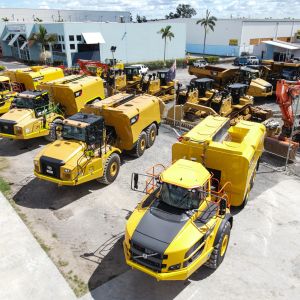“It’s been put to good use” can mean so many things: That it’s had a good run for you? Flogged and worn out? Been used for more and better purposes than initially intended?
Obviously there are many variables, and it can be difficult to objectively gauge. Looking at Utilisation is one way to measure this, as is looking at the cost versus financial benefit derived.
A few years ago, we were looking to buy a caravan. By the time we added up all the costs of owning one (registration and insurance, service/repairs, depreciation and cost of capital etc) including the camp site fee’s, I worked out that we’d need to camp three months solid in each year to make it stack up financially compared to staying in a Hotel.
The purchase of a recreational item however is often one of the heart rather than of the mind. We still ended up buying one, and used it 14 times (equivalent to a bit over a month in total) each year for a couple of years before selling it. I can’t find any statistics on average usage, but talking to others I am fairly confident that was more than most are used.
But does that mean it was put to good use? Compared to an average recreational users utilisation, yes. But compared to a strict economic criteria, no, because it shows an economic loss. However, in the Carlsson household satisfaction survey, the value in terms of enjoyment and family time together is like they say: Priceless!
Optimum Utilisation
Would the above constitute good use for a business? With a usage of about 10%, the answer is probably not. The ideal utilisation is of course 100%, but very rarely is that achievable. There are variables to consider, for instance if the equipment is of a specialised nature, it is more likely to have either very high (built for a specific and usually repetitive function, for instance a tunnel boring machine for a specific project) or very low utilisation (needs to be done, but infrequently; one example is our own “Big Bertha” forklift so we can load/unload large items ad hoc without having to get cranes to site). Both these examples would classify the machines as having had good use, even though utilisation was at different extremes.
Good Business Use
Most equipment that a business buys though usually forms part of what the businesses core purpose is. So what defines good use for a more mainstream product, like an excavator or dump truck? The higher the better is the simple answer, and again there are circumstances that determine what the benchmark should be. So what is a good benchmark?
Start by comparing to industry averages. At one point in my career, I had an insight into the vehicle hire market. Most of the big mainstream players were getting a utilisation of around 50%. But sometimes comparing to averages means setting the bar too low. Tighter managed businesses were achieving about 70-80%. Mine peaked at 95%, and was above 90% for all but one month in two years. Had we been blinded by comparisons to “everyone else”, we would probably never have reached the levels we did, because people who haven’t done it tell you it can’t be done. I even recall one person asking how we were going because we didn’t have any vehicles in the yard like the competitors – great, ours were all out working and earning money! (And yes, we could still supply our customer’s needs).
The Earth moving industry is different, but similar. Most times, the industry works on chargeable hours (not days like the vehicle industry), or volumes/tonnages moved. In either case, use is tied to how much a machine is working, or more accurately how much of it is chargeable. It also relates to the type of work you do, for instance doing large subdivision jobs or continuous mining should achieve a higher hourly usage for a given period than doing many small jobs.
Whilst the available work will determine your usage, don’t forget that you can reduce the need for high utilisation if you reduce your break even point. Break even is of course where the income you achieve reaches the point when it covers cost. So another way of improving the “Good use” assessment is to reduce the cost, and here is where getting a good second hand machine (as opposed to over capitalising on a new one) can be a winner for you.
Some of you may recall the below example showing why buying a good used machine stacks up. It assumes a business interest rate of 8%, and writing down the machine over 4 years:
|
Purchase Price |
Interest 8% |
Repayment over 4 years 40% residual |
Cost/year |
Cost per Hour (2,000hrs/yr) |
|
|
New Machine |
$300,000 |
$24,000 |
$45,000 |
$69,000 |
$35 |
|
3 year old, 4,000 hours |
$200,000 |
$16,000 |
$30,000 |
$46,000 |
$23 |
|
5 year old, 8,000 hours |
$100,000 |
$8,000 |
$15,000 |
$23,000 |
$12 |
The table uses 2,000 hours per year, which is pertinent to note. That is based on 40 hours per week, 50 weeks a year, or basically the same as most “normal” working weeks. RD Williams has basically made it a business to offer our customers low hour machines. Most of the machines we have for sale generally have averaged between 500 and 1,250 hours per year. In other words, we strive to find machines that have had less than optimal use (and plenty of life left), so you can put them to good use! The benefit to you is that you get a good machine that you can use at a fraction of the ownership cost of a new one.
And if you can’t achieve Good use?
So what do you do if you can’t achieve good business use? Sell the item (or don’t buy it in the first place), and you can consider these options instead:
– Buy something that reduces your cost to improve the payback time. For example, buy a good used machine instead of a brand new one. A smaller outlay means lower depreciation and lower capital costs.
– Increase the usefulness of your machine, for instance:
– Is your range of attachments limiting the jobs you can do? By adding one more, would it improve your utilisation or productivity so you can win more work?
– Is your machine ready and available to go to work?
– Are services and repairs up to scratch so you minimise downtime when you do have it when your machine is out on work?
– When interrupting your machine on a long term job, try using exchange components to reduce down time. RD Williams has for instance replacement circle drawbar assemblies for graders, so rather than remove and send off for repair, the down time is reduced from weeks to days.
– Can you diversify your business into other market segments?
– Hire or sub-hire so you only have the item when you require it
– “Share” with a business that has similar needs to your own. One example could be a float for machinery transport.
RD Williams is able to assist with many of the aspects required to help you achieve better use of your machinery.
As always, onwards and upwards!
Fred Carlsson
General Manager



